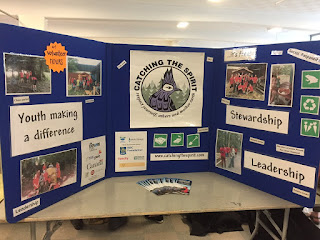Sundew had the magic lamp, the lamp which allowed you to have 3 wishes and grant them without any doubt. However, the ruthless King Vancouver, wanted to desperately marry princess star flower. And when the princess refused, Vancouver threatened to destroy the land with his dark power by turning it into a land of ice.
Princess star flower was very devastated that her land and the people in it are suffering because of her. Sundew, on the other hand, hated seeing her like that. So with his magic lamp, he wished to the crazy genie to melt the ice and grow plants that they can replenish the land.
The genie melted the ice which turned into a lake and grew plants like sphagnum moss who loved a high water table, high acidity, low oxygen and low nutrients. The genie also grew medicine plants like labrador tea for the people who were sickened by the extremely cold weather. He grew food plants like bunchberry, cloudberry, and bog cranberry. Not only did the genie plant these for the people but for the sake of the earth too. He knew that by growing these native plants, it would help to fight global warming by absorbing all carbon dioxide and locking it up for thousands of years. Both sundew and star flower were happy that the people of Camosun bog were recovering from the tragedy.
However, when King Vancouver found out about everything they'd done, he was furious. He created drains that lowered the water table and this destroyed the sphagnum moss. Sothe drains killed a lot of the native plants that decayed into soil because of the drop in acidity. In addition to his anger, he built non-affordable buildings in Camosun Bog so no one could live in the land.
When these buildings were built, forest plants invaded Camosun bog: Plants like the fern , polytrichum moss, skunk cabbage and the birch. Vancouver wanted to own the land for himself and partly for his people. The land was outcompeted by Vancouver's people and invaders occupied his buildings. And there were also empty buildings when there were people living in the street. He made the buildings expensive so that the good people that help fight against the global warming would go away and not be able to live in a good environment.
Bog plants such as lodgepole, caskara, kalmia, laurel, and saskatoon berry could not survive.
So with the low water table, King Vancouver was able to build "invasive buildings" as were called by the people of the land. These buildings caused many of the native people to vanish because they weren't adaptable to the new environment and couldn't afford to live in their own land.
Many of the native people and plants dissipated. Even sundew and starflower couldn't bear with the circumstances they were in so they left. But with the encouragement and hope that others showed them, others returned to the land and that included lodgepole and laurel. The two lovers sundew and starflower came to their realization that giving up was not an option so they came back on their own. The native people decided to stick together and fight for their land. Despite all the struggles they had to face, these good native people stayed as strong as ever.
Many years later, the people today called the "crazy boggers", who have the blood of the genie, planned to revive the land and actively planted sphagnum moss because they care about the sake of the global warming too and they want to reduce the carbon entering our atmosphere. Not just that, but they want to continue the work of their own ancestor, the genie.
When these buildings were built, forest plants invaded Camosun bog: Plants like the fern , polytrichum moss, skunk cabbage and the birch. Vancouver wanted to own the land for himself and partly for his people. The land was outcompeted by Vancouver's people and invaders occupied his buildings. And there were also empty buildings when there were people living in the street. He made the buildings expensive so that the good people that help fight against the global warming would go away and not be able to live in a good environment.
Bog plants such as lodgepole, caskara, kalmia, laurel, and saskatoon berry could not survive.
So with the low water table, King Vancouver was able to build "invasive buildings" as were called by the people of the land. These buildings caused many of the native people to vanish because they weren't adaptable to the new environment and couldn't afford to live in their own land.
Many of the native people and plants dissipated. Even sundew and starflower couldn't bear with the circumstances they were in so they left. But with the encouragement and hope that others showed them, others returned to the land and that included lodgepole and laurel. The two lovers sundew and starflower came to their realization that giving up was not an option so they came back on their own. The native people decided to stick together and fight for their land. Despite all the struggles they had to face, these good native people stayed as strong as ever.
Many years later, the people today called the "crazy boggers", who have the blood of the genie, planned to revive the land and actively planted sphagnum moss because they care about the sake of the global warming too and they want to reduce the carbon entering our atmosphere. Not just that, but they want to continue the work of their own ancestor, the genie.






















